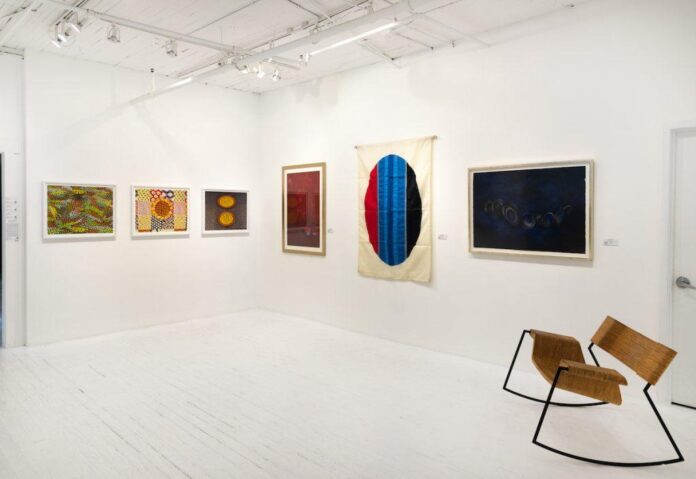There’s an outsized emphasis on newness during Frieze week. Dealers dish about emergent trends and brag about recent work from their rosters. Articles—including some on this site, probably—will spotlight first-time participants and crown future market stars. Everyone wants to know: What’s the next big thing?
But this week, 21 dealers will ignore the new and instead look 50 years back in time. This is the precept behind “That ‘70s Show,” a joint presentation of work from the 1970s by 21 New York galleries, including Bortolami, Karma, Kasmin, Lyles & King, and Ortuzar Projects.
From May 18–21, they will set up shop across two lofted floors at Eric Firestone Gallery on Great Jones Street, a raw, light-filled space that itself feels like the downtown art world of yesteryear. The congeniality of the event reflects a simpler time too—a time before talk of markets and foot traffic, when galleries looked more like art spaces than Apple Stores.
The event, organized by Eric Firestone, is branded as an “alternative” to Frieze New York, but you won’t mistake it for that or any other big box expo. There are no booths or bars; no overpriced pastries or panels sponsored by banks. Each presenter has been given the same amount of wall space in the gallery, with most choosing to display two to five works each. None of them paid to participate.
In truth, “That ‘70s Show” will look less like a fair than a salon—or maybe a just group exhibition mounted by friends. In fact, that’s exactly what it is.
Just four weeks ago, Firestone began texting and calling fellow New York gallerists—most of whom run similar small-to-mid-sized spaces downtown—with his idea. Of the roughly 23 dealers he approached, only two declined to partake. “Everybody just said yes,” Firestone recalled, as if still surprised by the response.

Installation view of “That ’70s Show” at Eric Firestone Gallery, featuring work by Robert Duran. Courtesy of Eric Firestone Gallery.
That the participating galleries only had a month to prepare may have actually sweetened Firestone’s pitch. Most dealers, he pointed out, plot their fair booths months or even a year out; the spontaneity of his proposed show alleviated the pressure of planning. “Everybody really responded to it,” he said. “I think it’s something refreshing for all of us.”
Among the highlights in the show are a series of trippy paintings by Roger Brown, presented by Venus over Manhattan; several prints by the color-obsessed photographer Sandy Skoglund, courtesy of Ryan Lee Gallery; and a pair of Susan Brockman films, shown by Soft Network. Franklin Parrasch Gallery will show the work of Sylvia Snowden; P.P.O.W. is bringing pieces by Dottie Attie and Judith Linhares. All works were made in the 1970s.
The idea of focusing on that particular decade came to Firestone a month ago when he heard critic Jerry Saltz reflect, in a lecture, on the importance of galleries fostering the legacy of older artists. All the participating galleries bring a “long-lens” approach to the work in this week’s exhibition, the dealer said.

Installation view of “That ’70s Show” at Eric Firestone Gallery, featuring work by Joe Overstreet, June Leaf, and Anita Steckel. Courtesy of Eric Firestone Gallery.
When asked what he meant by “long-lens,” Firestone pointed to painter Joe Overstreet—one of two gallery artists featured in “That ‘70s Show.” The industry has been slow to appreciate the work of Overstreet, who Firestone began working with in 2017 (he passed away in 2019), but a surge of attention from scholars and curators in recent years has repositioned him as one of the most influential artists of his generation. Sales of Overstreet’s work have followed too.
“It’s not about the race,” Firestone said. “It’s about: how do I strategically take this work and properly give it the visibility it needs? That’s the mission of most of the galleries who are dealing with this type of material.”
More Trending Stories:

























